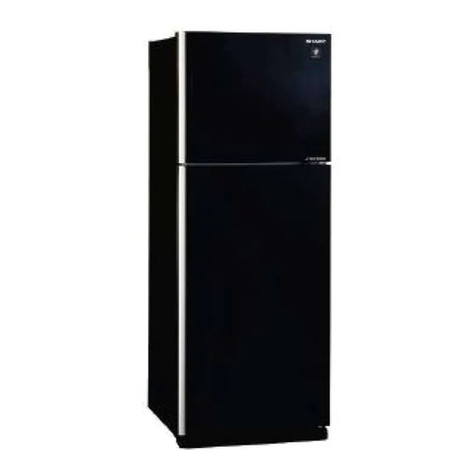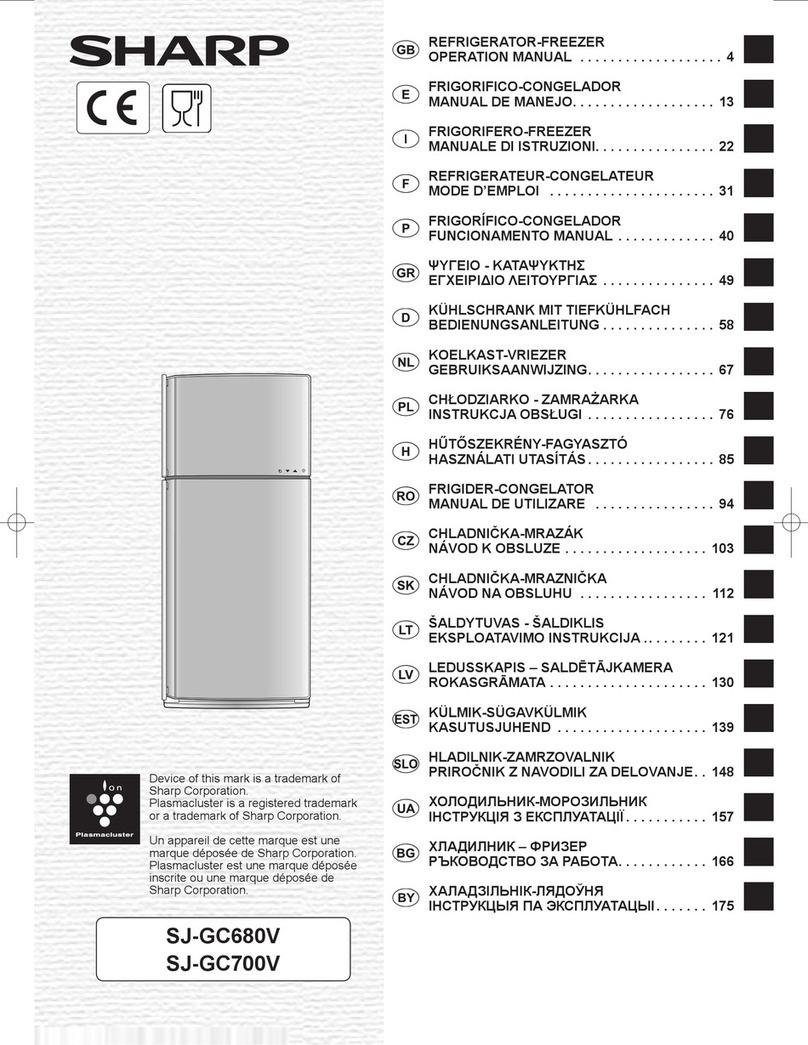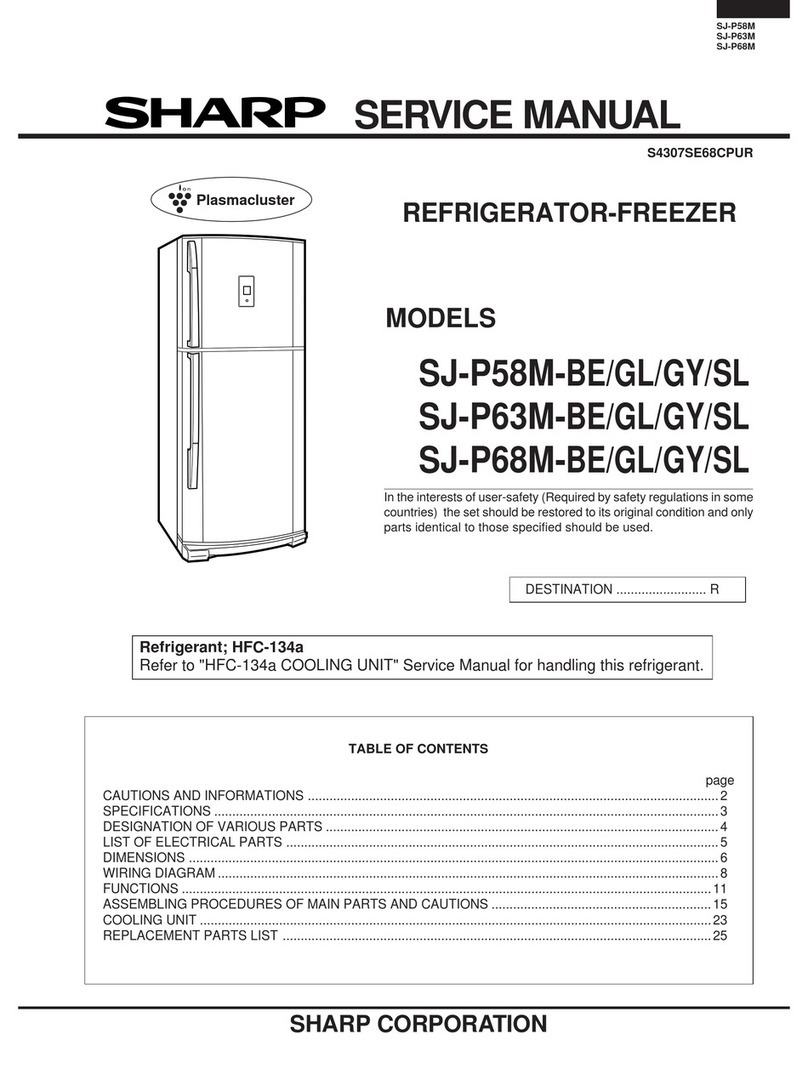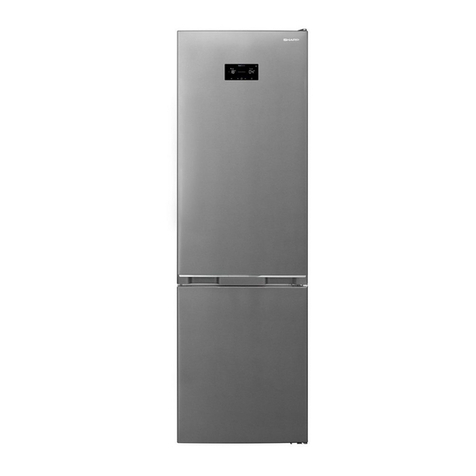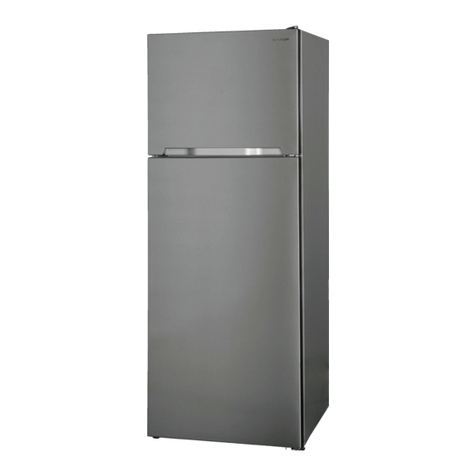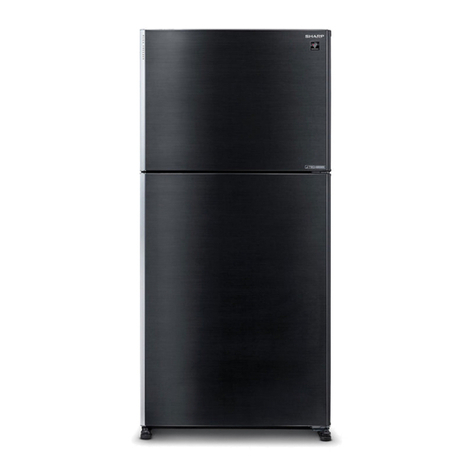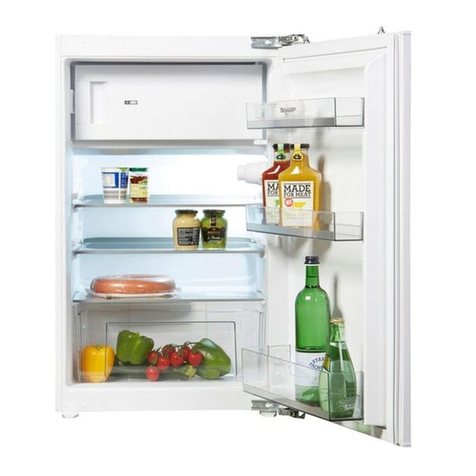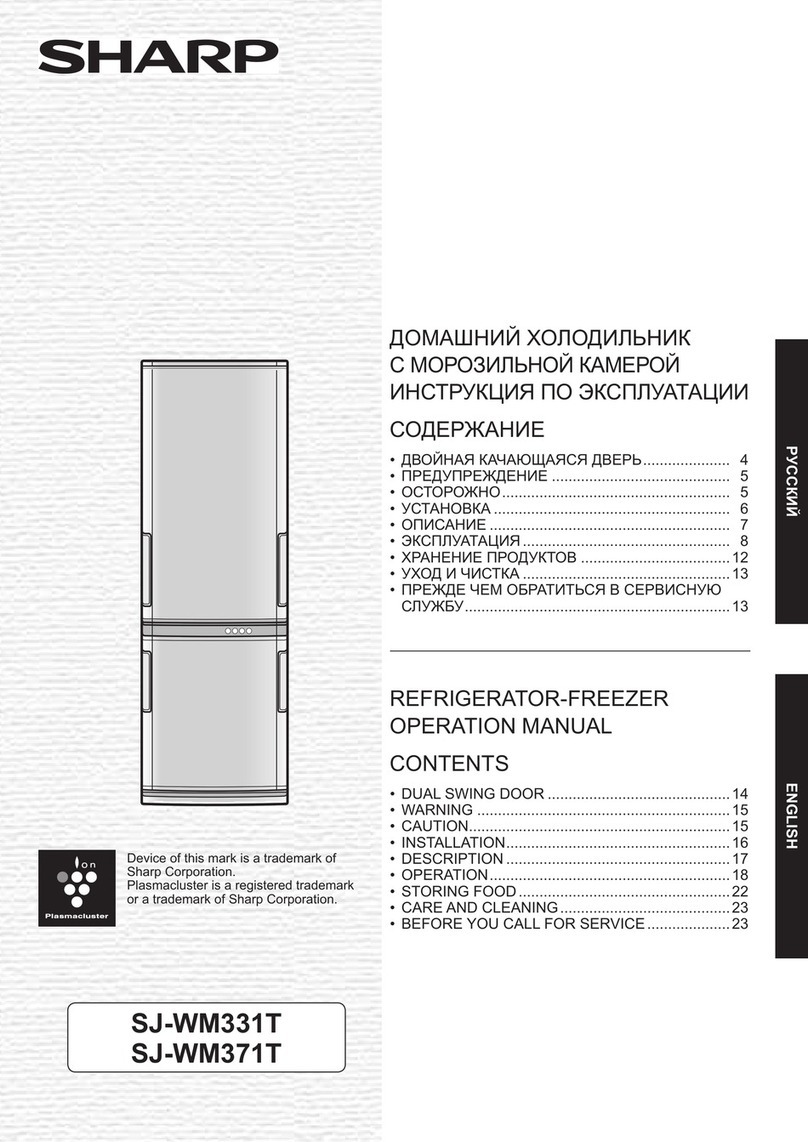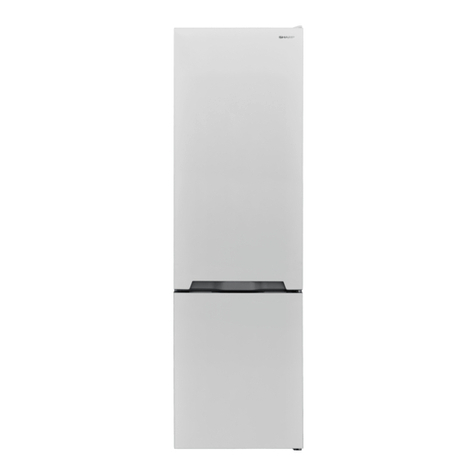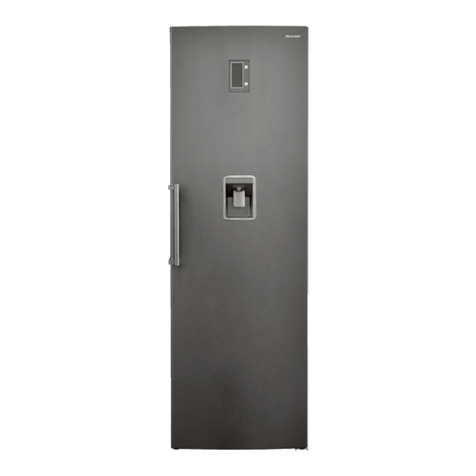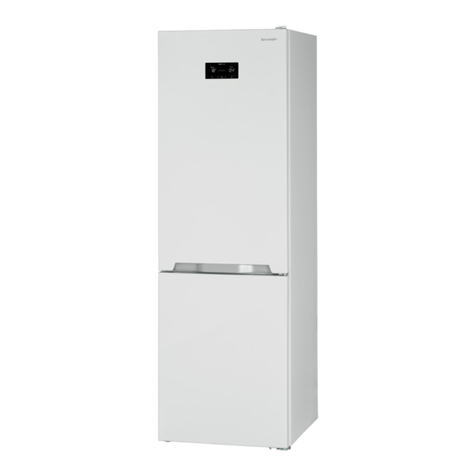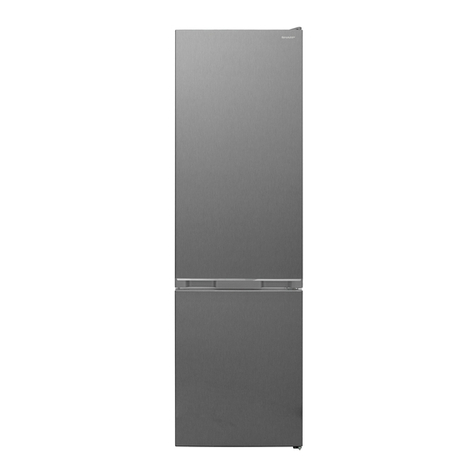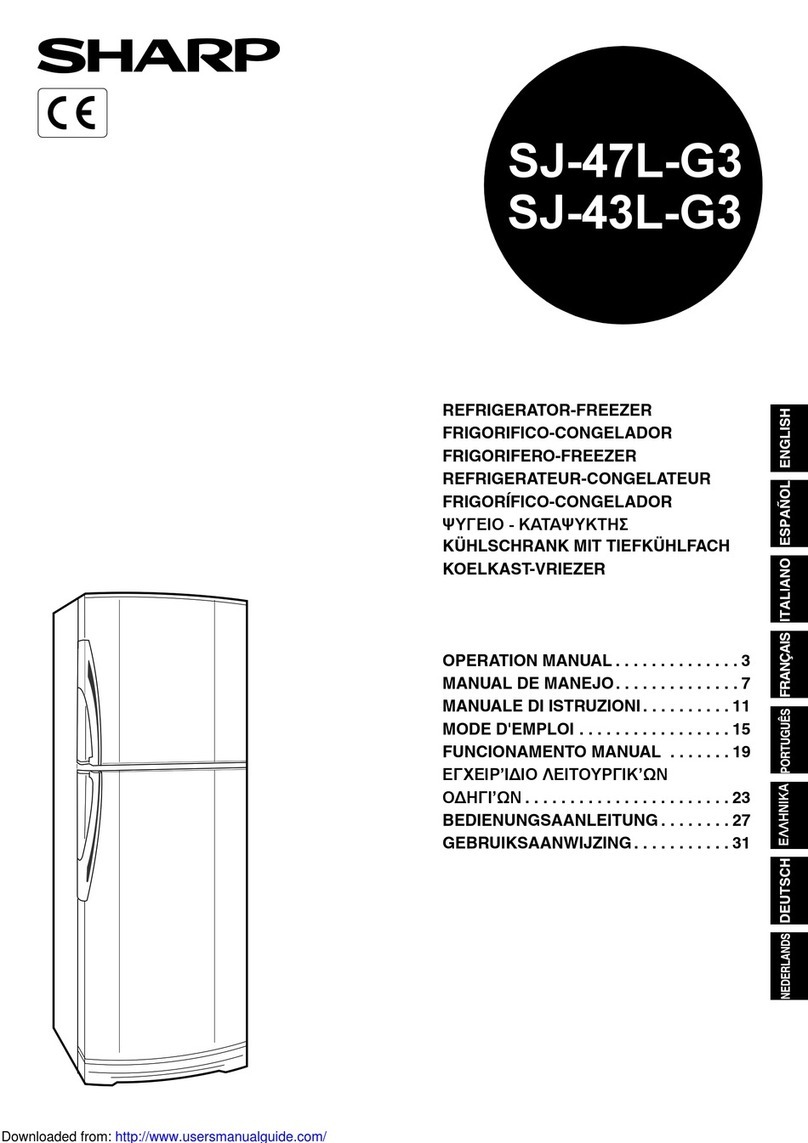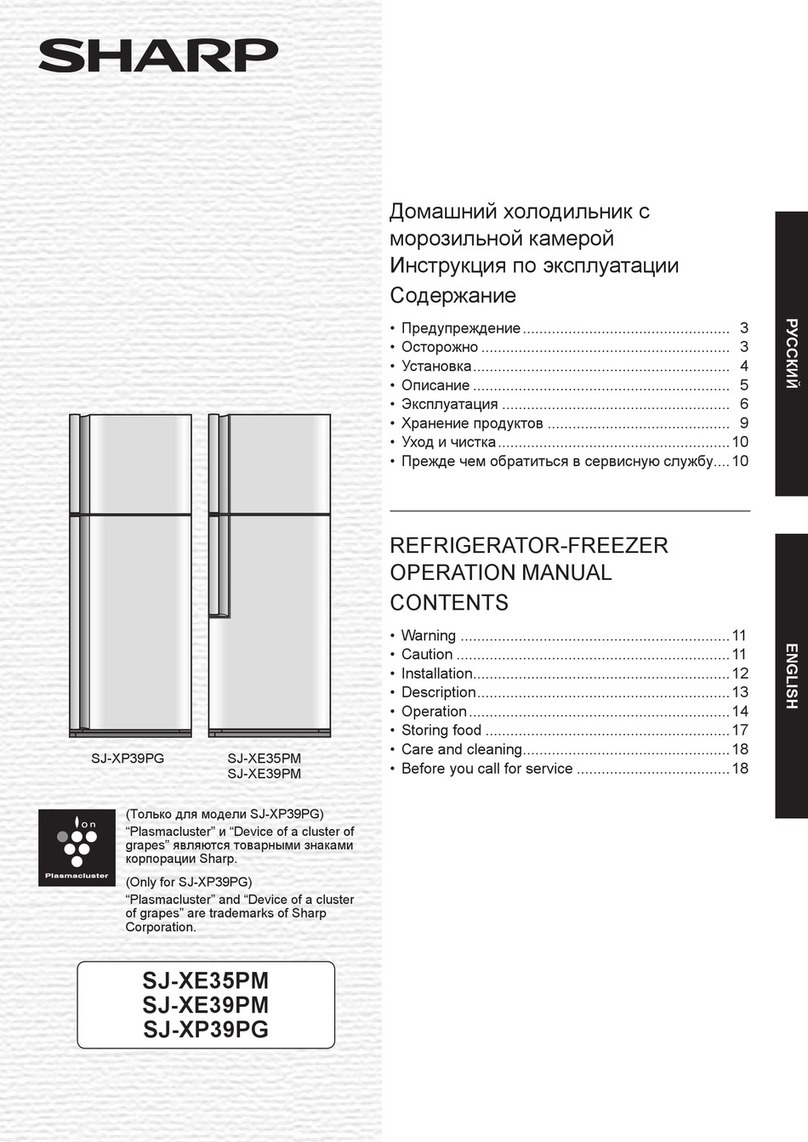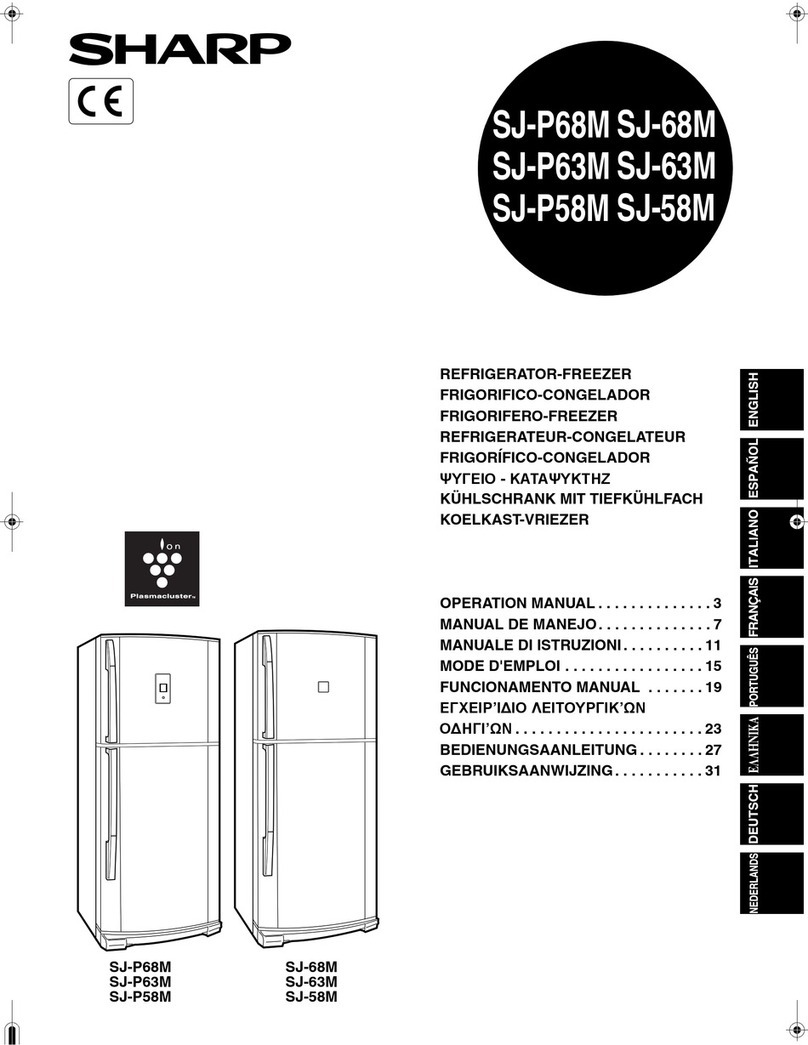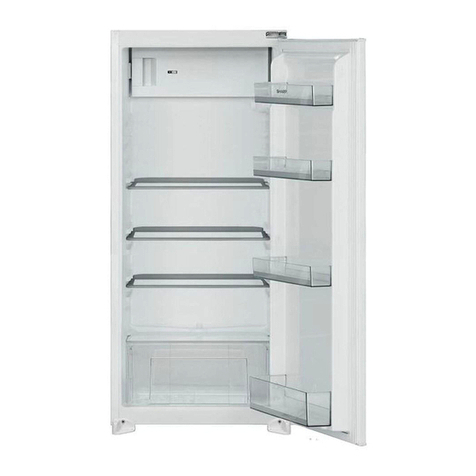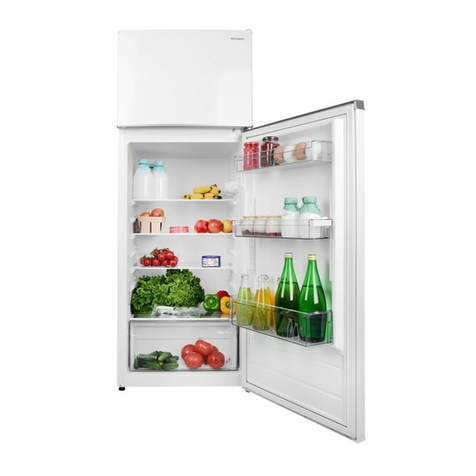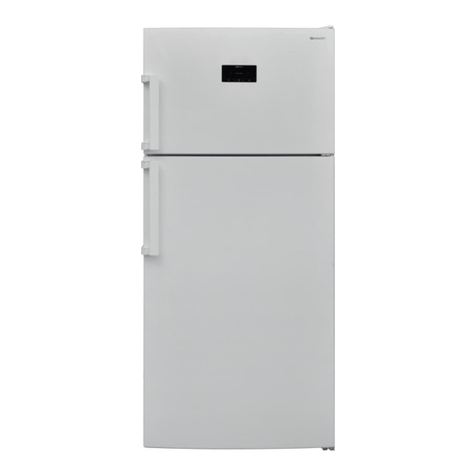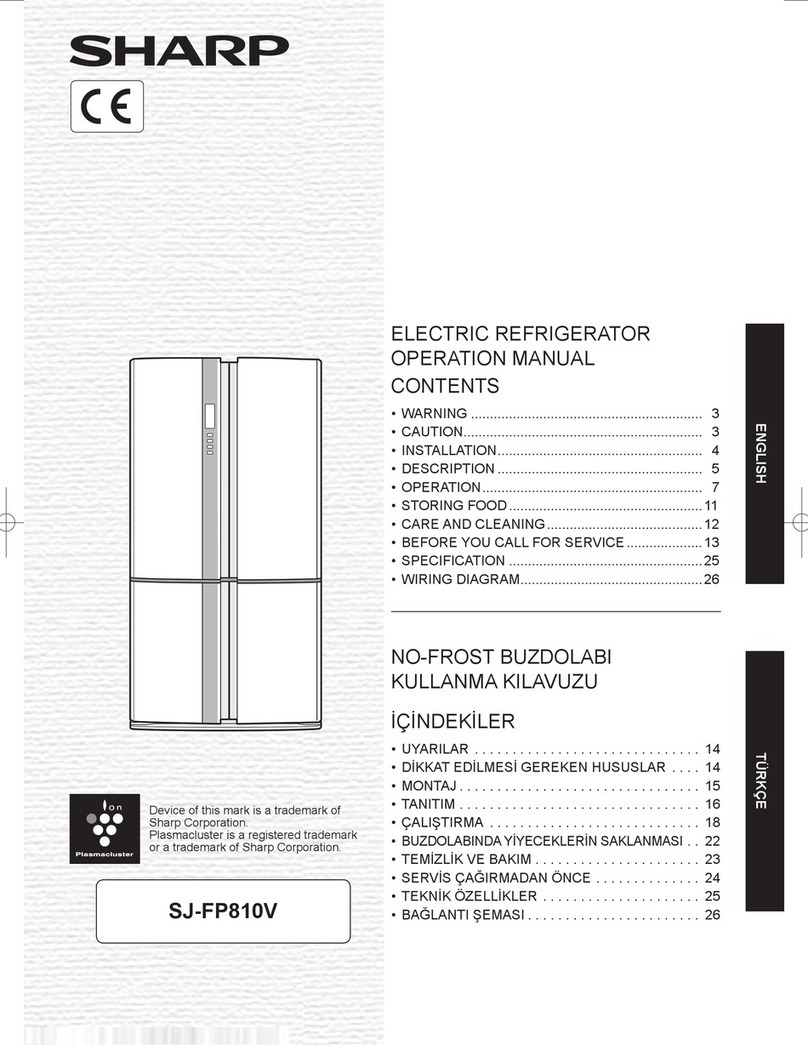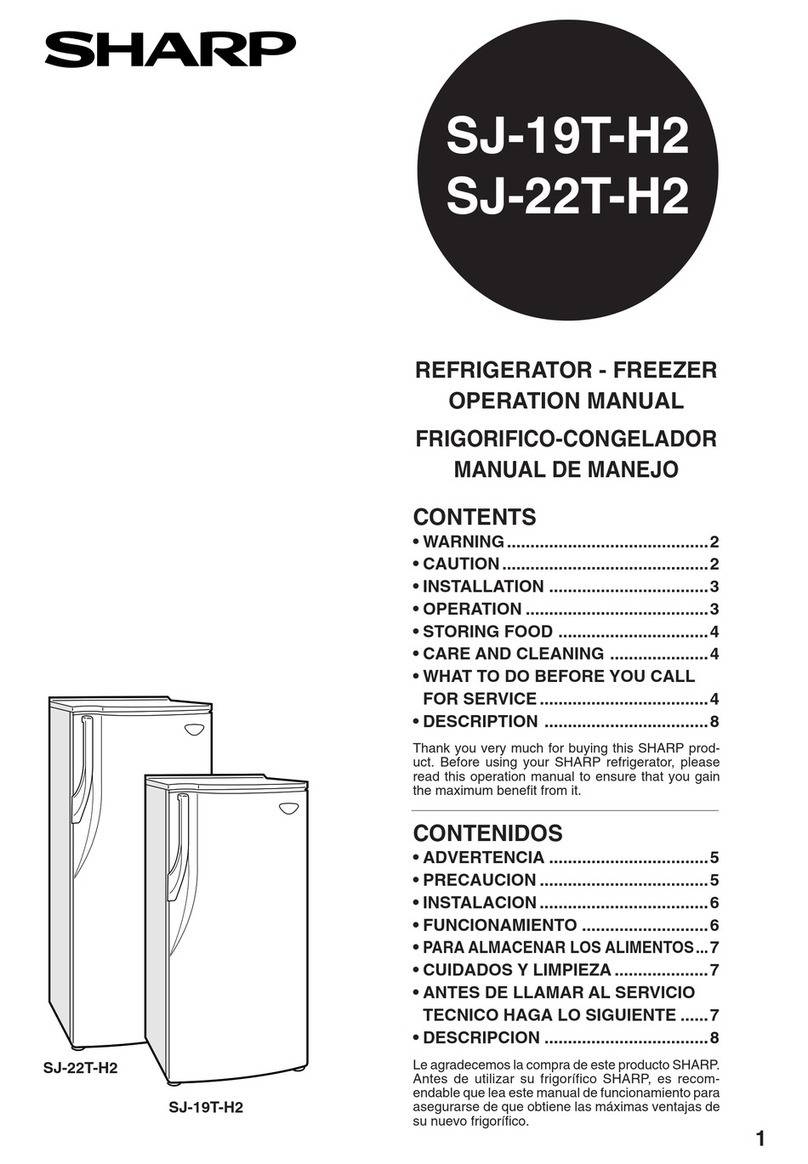
EN -5-
CHAPTER -1: GENERAL WARNINGS
Installation Warnings
Before using your fridge freezer for the rst time, please pay attention to the following points:
• The operating voltage for your fridge freezer is 220-240 V at 50Hz.
• The plug must be accessible after installation.
• Do not use plug adapter.
• Your fridge freezer may have an odour when it is operated for the rst time. This is normal and the odour will
fade when your fridge freezer starts to cool.
• Before connecting your fridge freezer, ensure that the information on the data plate (voltage and connected
load) matches that of the mains electricity supply. If in doubt, consult a qualied electrician.
• Insert the plug into a socket with an efcient ground connection. If the socket has no ground contact or the plug
does not match, we recommend you consult a qualied electrician for assistance.
• The appliance must be connected with a properly installed fused socket. The power supply (AC) and voltage at
the operating point must match with the details on the name plate of the appliance (the name plate is located
on the inside left of the appliance).
• We do not accept responsibility for any damages that occur due to ungrounded usage.
• Place your fridge freezer where it will not be exposed to direct sunlight.
• Your fridge freezer must never be used outdoors or exposed to rain.
• Your appliance must be at least 50 cm away from stoves, gas ovens and heater cores, and at least 5 cm away
from electrical ovens.
• If your fridge freezer is placed next to a deep freezer, there must be at least 2 cm between them to prevent
humidity forming on the outer surface.
• Do not cover the body or top of fridge freezer with lace. This will affect the performance of your fridge freezer.
• Clearance of at least 150 mm is required at the top of your appliance. Do not place anything on top of your
appliance.
• Do not place heavy items on the appliance.
• Clean the appliance thoroughly before use (see Cleaning and Maintenance).
• The installation procedure into a kitchen unit is given in the installation manual. This product is intended to be
used in proper kitchen units only.
• Before using your fridge freezer, wipe all parts with a solution of warm water and a teaspoon of sodium
bicarbonate. Then, rinse with clean water and dry. Return all parts to the fridge freezer after cleaning.
• Use the adjustable front legs to make sure your appliance is level and stable. You can adjust the legs by turning
them in either direction. This must be done before placing food in the appliance.
During Usage
• Do not connect your fridge freezer to the mains electricity supply using an extension lead.
• Do not use damaged, torn or old plugs.
• Do not pull, bend or damage the cord.
• This appliance is designed for use by adults. Do not allow children to play with the appliance or hang off the
door.
• Never touch the power cord/plug with wet hands. This may cause a short circuit or electric shock.
• Do not place glass bottles or cans in the ice-making compartment as they will burst when the contents freeze.
• Do not place explosive or ammable material in your fridge. Place drinks with high alcohol content vertically in
the fridge compartment and make sure their tops are tightly closed.
• When removing ice from the ice-making compartment, do not touch it. Ice may cause frost burns and/or cuts.
• Do not touch frozen goods with wet hands. Do not eat ice-cream or ice cubes immediately after they are
removed from the ice-making compartment.
• Do not re-freeze thawed frozen food. This may cause health issues such as food poisoning.Old and Out-of-
order Fridges
• If your old fridge or freezer has a lock, break or remove the lock before discarding it, because children may get
trapped inside it and may cause an accident.
• Old fridges and freezers contain isolation material and refrigerant with CFC. Therefore, take care not to harm
environment when you are discarding your old fridges.
CE Declaration of Conformity
We declare that our products meet the applicable European Directives, Decisions and Regulations and the requirements
listed in the standards referenced.
Disposal of your old appliance
The symbol on the product or on its packaging indicates that this product may not be treated as household
waste. Instead it shall be handed over to the applicable collection point for the recycling of electrical and
electronic equipment. By ensuring this product is disposed of correctly, you will help prevent potential
negative consequences for the environment and human health, which could otherwise be caused by
inappropriate waste handling of this product. For more detailed information about recycling of this product,
please contact your local city of ce, your household waste disposal service or the shop where you
purchased the product.
